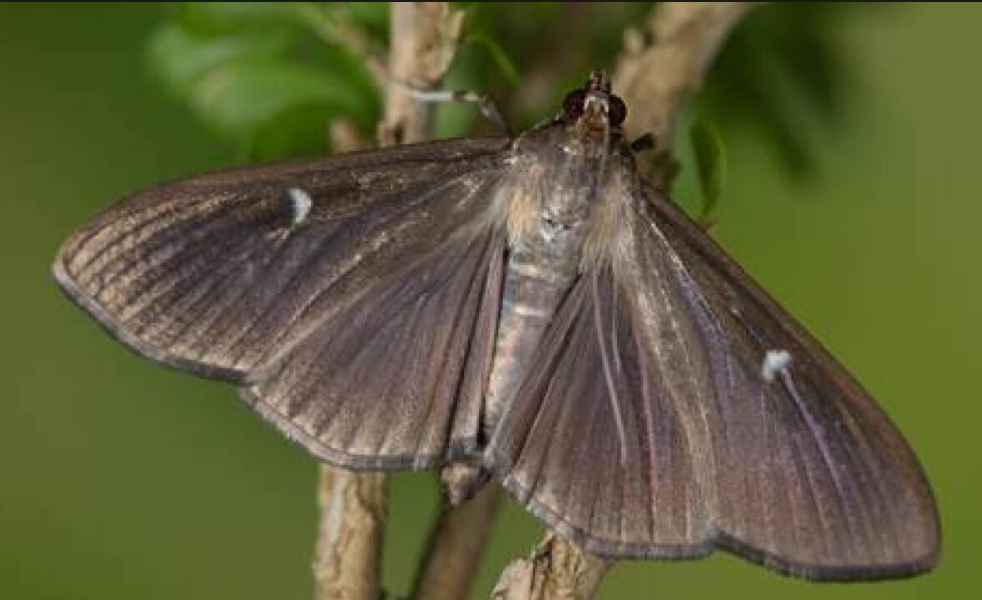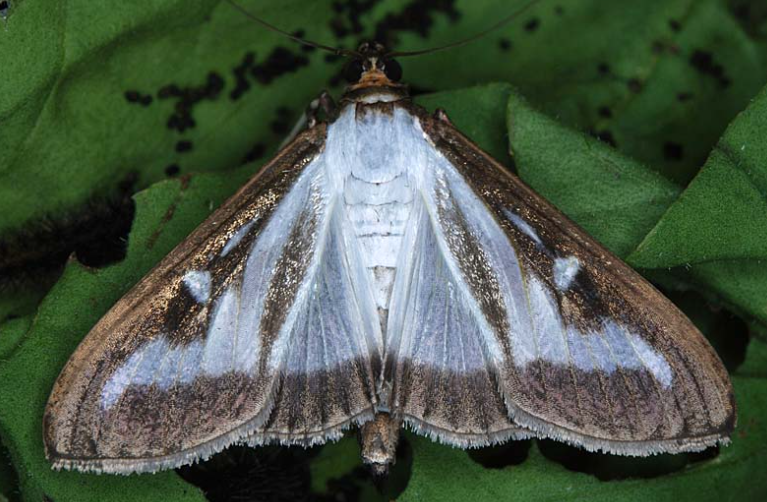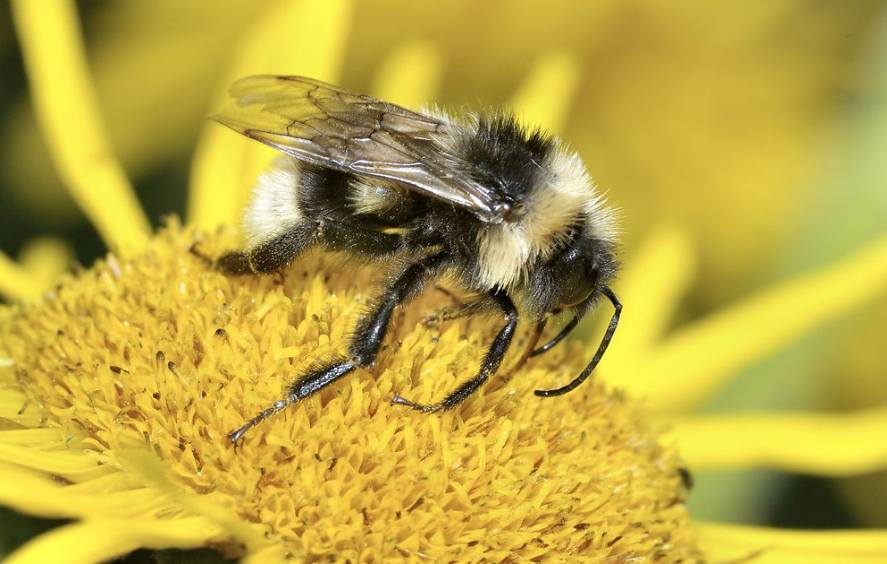
Intriguing facts about Box Tree Moth
Cydalima perspectalis is the scientific name for the Box Tree Moth, which belongs to the Crambidae family of moths. It is native to Taiwan, China, Japan, and the Korean Peninsula in East Asia. However, it has been introduced to other European nations, most notably the UK, where it has become a significant annoyance.
Physical description of the Box Tree Moth
The adult Box Tree Moth has a wingspan of around 4 cm and is characterized by its unique look. The forewings are white with distinct brown markings, while the hindwings are light brown. The moth is most active throughout the summer, which lasts from May to September, and is attracted to light sources at night.
Damage caused by the Box Tree Moth larvae to boxwood plants
One of the Box Tree Moth’s most concerning characteristics is how it affects boxwood plants (Buxus species). This moth’s larvae severely defoliate and damage boxwood plants by consuming their leaves. This may damage and finally kill boxwood hedges and topiaries, which are valued for their ornamental qualities in gardens and landscapes.
Life Cycle of Box Tree Moth
The life cycle of the Box Tree Moth consists of four stages: the egg, larva, pupa, and adult. The female moth lays her eggs on the undersides of boxwood leaves, usually in clusters. Small greenish-yellow caterpillars with black heads and black spots all over their bodies emerge from the eggs. These caterpillars eat the leaves, leaving behind skeletonized vegetation.
Box Tree Moth: Transformation from one life stage to another
As they get older, the caterpillars go through several molting stages when they lose their old skin and acquire larger bodies. When the caterpillars mature, they spin silken cocoons to transform into pupae on nearby boxwood trees or structures. Within the cocoons, the caterpillars undergo metamorphosis into pupae, which eventually mature into adult moths.
Prevention and Control Method of Box Tree Moth
The Box Tree Moth may be controlled using a variety of management strategies to reduce damage and halt its spread. These include plucking the larvae and pupae by hand and discarding them, regularly inspecting boxwood trees for signs of infestation, and utilizing biological control agents, such as parasitic wasps, to target the eggs and larvae of the moth.

Chemical pesticides may sometimes be employed as a last resort, but their application has to be done correctly and in accordance with local regulations to avoid harming the ecosystem and beneficial insects.
The box tree moth is a destructive pest that harms boxwood plants and ecosystems
Overview The box tree moth is a member of the Crambidae family, with the scientific name Cydalima perspectalis. This moth, which was formerly endemic to East Asia, is now considered a terrible nuisance in many regions of North America and Europe. Its population has grown quickly in recent years, seriously harming boxwood plants, which are often utilized in gardens and landscaping. We will look at some significant information on the box tree moth and its effects on the ecosystem.
Fascinating facts of the Box Tree Moth insects
The adult box tree moth is distinguished by its striking black dots and its white wings with brown borders, measuring around 4 centimeters in length. Initially appearing yellowish-green, the larvae, or caterpillars, eventually become a vivid green hue with black dots and stripes. These caterpillars have a maximum length of 4 cm. The box tree moth has four phases in its life cycle: the egg, larva, pupa, and adult. Usually in groups of 30 to 40, the mature female moth deposits her eggs on the underside of boxwood leaves. The eggs hatch, and the caterpillars appear after approximately a week. The caterpillars devour the leaves, often severely defoliating them in the process. They finally create a cocoon and go through multiple molting phases to reach the pupal stage. The cycle restarts when the adult moths emerge from their cocoons after a few weeks.
Damage caused by the box tree moth
Impact and damage Due to its capacity to seriously harm boxwood plants, the box tree moth is regarded as a serious pest. After feeding on the leaves, the caterpillars often skeletonize them, leaving just the veins. Particularly in situations where there is a serious infestation, this defoliation weakens the plants and may eventually cause them to die. This bug especially affects ornamental plants, such as topiaries and boxwood hedges. The box tree moth’s effects go beyond the aesthetic harm it does to plants.
Negative impact of box tree moth on environment
Boxwood is a vital component of many ecosystems because it provides a place for different insects and birds to live and feed. These environments may be negatively impacted by the moth’s infestation of boxwood plants, which might lead to a decline in biodiversity.Dissemination and Administration
Monitoring for Box Tree Moth infestations
Early in the new millennium, box tree moths were probably brought to Europe via imported diseased trees. Since then, because of its long-range flight capabilities and the absence of natural predators in its new habitat, it has quickly expanded over several nations. The movement of infected plant material could potentially unintentionally spread the moth’s eggs and caterpillars. The box tree moth infestation has been managed by a combination of chemical and cultural management strategies.
Methods for monitoring moth populations
Cultural methods include checking plants on a regular basis, hand-removing eggs and caterpillars, and using pheromone traps to keep an eye on moth populations. Chemical control calls for the use of pesticides; nevertheless, in order to avoid damage to beneficial insects and the environment, this strategy should be used sparingly and in compliance with local rules. In addition to these management measures, increasing public awareness of the box tree moth and its effects is critical. It is important to inform gardeners, landscapers, and plant nurseries about the warning indications of infestation and the steps to take to stop the pest from spreading.
The threatened facts about the Box Tree Moth
Boxwood plants and the ecosystems they sustain are being threatened by the destructive box tree moth. Gardeners and environmentalists are concerned about it because of its quick spread and capacity to inflict significant harm. Through comprehending the life cycle, consequences, and effective management techniques linked with this moth, we may endeavor to mitigate its adverse impacts and save our priceless boxwood trees.


